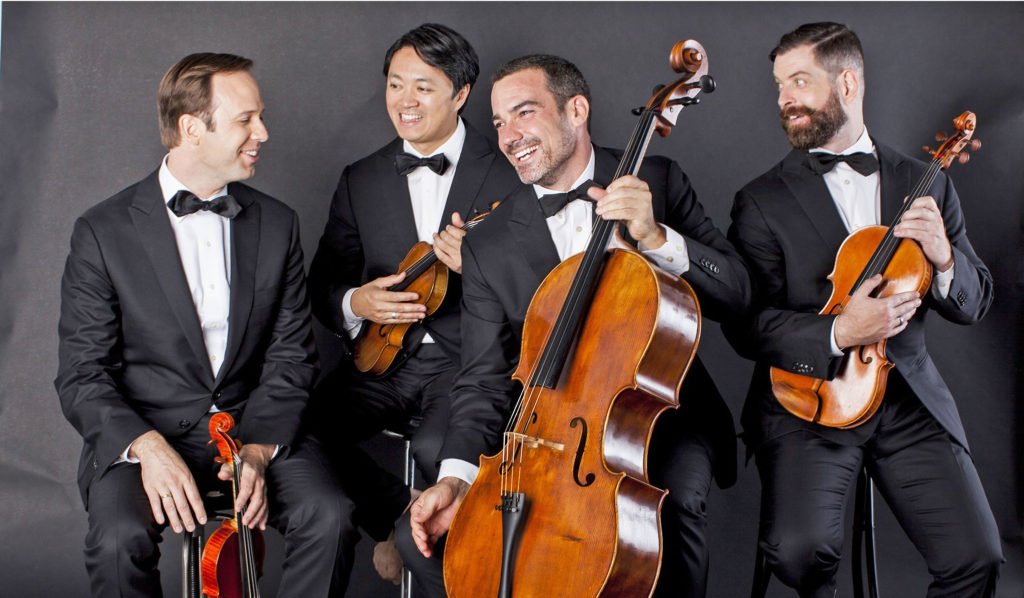
It’s been several years since the Miró Quartet performed at Maverick Concerts in Woodstock. So its return this afternoon made for a joyous occasion. It was equally joyous for the ensemble to be playing its first post-pandemic concert in a normal setting.
Lyric for Strings by George Walker (1922-2018), the Black composer-pianist who once performed at Maverick in 1987 (I interviewed him then!), seems to have become his best-known piece. It’s thoroughly lovely, much in the vein of his slightly older fellow Curtis Institute student Samuel Barber’s inevitable Adagio, Walker’s piece, wears better because it offers more internal contrasts than the Barber’s. Let’s hope that Walker won’t be remembered only for this, because he left us numerous substantial and worthwhile works including a piano concerto, piano sonatas and chamber works. The foursome provided the Lyric with the fervency it deserves.
Kevin Puts (1972- ) has managed to develop an individual style of composition, at least as revealed in his quartet Home, by eliminating most of the elements that we find interesting in music and by repeating incessantly repeating what remains. It’s euphonious enough, if that’s what you crave, and this one eventually develops a little bit of rhythmic excitement. But by that point I had written the score off as drivel and nothing came along to change that characterization. The Miró Quartet apparently believes in this composer, having commissioned him three. The audience didn’t seem to mind the Home too much and someone I know actually bought the CD (“Only five copies left!”) containing a Miró recording of previous Puts compositions.

No one would dare dispute the radical inventiveness and overall greatness of any of Beethoven’s late quartets. In Beethoven’s String Quartet No.13 in B-flat Major, Op.130, with the Grosse Fuge, Op.133, it became immediately apparent that the ensemble was doing what it could to emphasize the radical nature of the music, which, as they say, still sounds modern today. We heard the strikingly dynamic contrasts and accents which Beethoven indicates; not every ensemble honors these markings so assiduously.
I had a couple of minor reservations about the interpretation. Many years ago, my piano teacher Piero Weiss criticized me for de-emphasizing a passage in a Beethoven Sonata which consisted mostly of broken chords. “Beethoven meant every note he wrote, and you have to respect that,” Mr. Weiss rightly insisted. So although the second movement is marked Presto and that does mean damn fast, this ensemble played it too fast for clear articulation, resulting in a hectic feeling. And while the concluding Grosse Fuge (played as the finale, as Beethoven intended it) thrives on its relentless drive, some moments felt a little too relentless and could have used more variety, which was abundantly present in most of the movement.
Still, the ensemble met a tremendous challenge gratifyingly well and memorably. To help us return to earth, the Miró Quartet gave us a charming encore, a lovely arrangement of Harold Arlen’s “Somewhere Over the Rainbow.” If they announced the arranger, I missed it.
Next week the Manhattan Chamber Players debuts at Maverick with string quintets by Mozart and Brahms—not music we hear often.
Leslie Gerber, who lives in Woodstock, New York, has been reviewing professionally since 1966, for such venues as Performance Today, Fanfare, and Amazon.com. He also publishes the Parnassus Records label.


